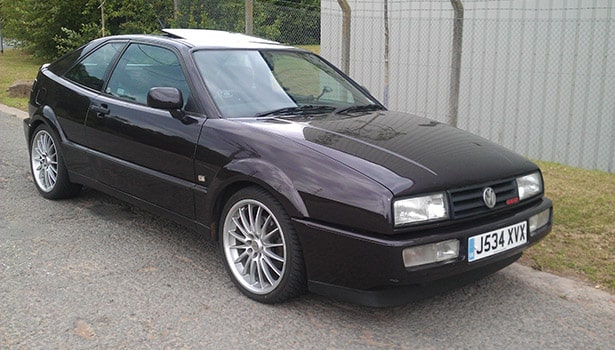
In light of the recent hurricane disasters we’ve experienced this year from Harvey, Irma and Maria, we put out an article on how to protect a classic car or truck during a hurricane. Unfortunately, not everyone was able to get their vehicles to higher ground or adequately protect their vehicles from flood waters.
When a classic car gets flooded, depending on the extent of the flooding, the owner is facing a tough choice. Restoring a flooded car is a long and expensive process. The love and bond many of us have with our classic cars and trucks leaves us with no other choice… we must restore.
Water, especially saltwater, can really do damage to a vehicle. Bumper to bumper, inside and out, there are no parts of a classic car that aren’t susceptible to flood damage. The longer it sits under water or stays wet, the worse the damage will be. Mold and corrosion do not take long to set in so getting the vehicle drained and dried out as soon as possible is critical in controlling the amount of damage.
Here are some tips you can use to help minimize the damage to your classic car from flood water.
First order of business is to determine how much of the vehicle was submerged. There will likely be sediment from water lines on the outside of your car showing how high the water level was. If the vehicle was in a garage, there are likely other tell signs of high the water came in. If the vehicle was completely submerged, you will likely need a full restoration. If the water only came up a foot or two, you might be in better shape than you think.
Before getting to work, make sure you are working in a safe environment. Floods can leave a lot of loose debris behind. It is best to wear a pair of work gloves and safety glasses just to be safe. Make sure you are working in a well-ventilated area as well. If mold has started to form consider wearing a respirator. Oh yeah, disconnect the battery in case you didn’t do that prior to the flooding.
Engine & Transmission
The toughest part to fix is going to be your engine and transmission, so let’s start with that. First and foremost, if you suspect that even a little water got into the engine, do not attempt to start it. Doing so could destroy your motor. Same thing goes for the transmission. It should never be operated if it has water inside. No matter what, we suggest replacing the oil and transmission fluid just to be sure.
If the engine was submerged, there is a good chance the debris and contaminants entered through the carburetor intake. There is no easy way to say this, the engine must be dismantled and cleaned. If your classic was submerged enough to cover the radiator, be sure to clean off all the radiator fins and make sure you replace the antifreeze with a fresh batch so you know the diluted mixture is correct.
If you are certain you have all the water out of the oil, the engine is dry and you are ready to fire it up, prepare the oiling system first by spinning the oil pump separate of starting system. Water does not compress which means that if water is the combustion chamber and the engine rotates, it is possible to damage the pistons and rods. The best way to beat this is rotate the engine with no spark plugs in. This will push out any water that was left behind in the combustion chamber. After rotating the engine a few turns, put a few drops of oil into each spark plug to ensure the cylinder walls and pistons are coated well. Rotate the engine a few more times and then replace the spark plugs.
The last thing in the engine bay to be cleaned is the engine bay itself. Male sure you have everything sealed up well and go ahead and clean the engine bay as you normally would. We have a great article that will walk you through how to clean your classic car’s engine bay.
Next step is getting your transmission back to normal. Of course, you will want to replace the fluid no matter what. Keep an eye on the fluid as it drains out to see if any debris made its way into the transmission while underwater. Although unlikely, if debris got inside the transmission you may be forced to dismantle and clean that as well.
Brakes & Suspension
Chances are you are going to need to replace the brakes. Brakes do not do well when submerged. For sure you will need to replace the brake fluid at a minimum. Your best bet is to remove the wheels and take apart the drums, shoes and brake pads and inspect their condition after they have dried. You might get lucky and be able to salvage some of the pieces. Chances of survival increase if the car was only flooded for a short time.
Fingers crossed that your suspension and the rest of the underbody were not damaged too badly. Look for new signs of corrosion during your inspection. If everything looks good, do a thorough cleaning with a mild detergent to remove any salt, sediment and other contaminants. Be sure to clean everything you can reach. The more flood crud you can remove, the better.
After cleaning apply some fresh grease to help maintain the suspension. Fluid in the axles should also be replaced. Keep an eye on this fluid like you did with the transmission. If any debris is present in the fluid, you should really dismantle and clean the axle.
Exterior Panels, Bumpers and Trim
Hopefully the water has not deteriorated your vehicle’s finish. Saltwater is especially harsh on a car’s paint. It is very important to wash, rinse, repeat multiple times to ensure you have all the salt and grime off the exterior of the car. Don’t forget to clean the inner door jams and other nooks and crannies that the flood water could have reached.
We suggest you start the cleaning process with a focus on the big parts… fenders, quarter panels, doors and rocker panels. Then focus on cleaning the trim, bumpers, headlights, grills etc. One you have washed and rinsed the entire exterior, rinse it again. It is very important to remove all the contaminants. One you have thoroughly cleaned your car, apply a good coat of was to protect it.
Interior
This part of the cleanup can be the most time consuming. Interior cushions and carpet can take a long time to dry out. It is best to remove all the seats and carpet and allow them to dry out separately. It is also easier to clean them while removed from the vehicle. The seats and carpet removed also gives you better access to the rest of the interior. You will likely need to remove the dash to investigate damage to electronics and the vehicles ventilation systems. It should go without saying, but make sure that all electronics are completely dry before powering them up.
Door panels need to be carefully removed to avoid further damage. Inspect the inside of your doors and window regulators to make sure everything is operational and free of debris. Remove the weather stripping to make sure no water is trapped behind it. If the water was deep enough, you will need to remove the headliner and back window deck as well. The trunk also needs to be emptied completely.
Clean all surfaces inside the vehicle thoroughly and leave the doors and windows open to allow for maximum air flow. An air compressor or hair dryer can help dry out those hard to reach places. Drying quickly is key in preventing mold and mildew. After the interior is cleaned, apply a coat of wax to all interior metal panels inside the car cabin and trunk. This will help protect it from future contaminants.
Thankfully most classic cars and trucks don’t have computers that can get fried in floods. They are a little simpler, but still have some electrical water damage to assess. Things like the starter, any electronic gauges, stereo system and even the wiper motors need to be dried out and inspected.
In an event like a massive hurricane, the most important part is protecting your family. Just about everything else can be repaired or replaced. We hope you, your family, home and prized possessions are all safe and sound. If your classic did get flooded, we hope these tips will give you peace of mind and help get your collector back on the road.

